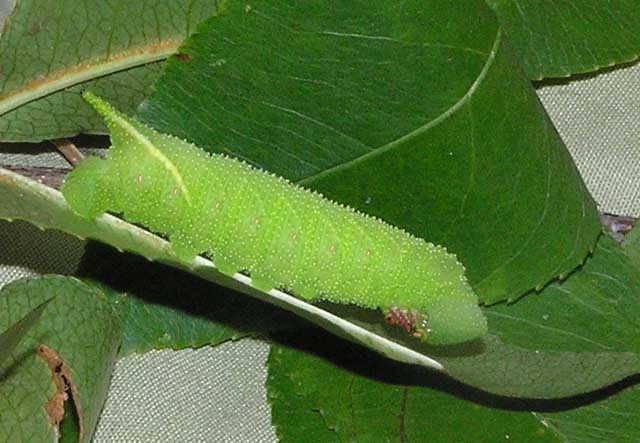Pacific County, Washington
Sphingidae Larvae
Paonias excaecata, courtesy of Joan F. Rickert.
|
|
Updated as per James P. Tuttle's The Hawk Moths of North America, July 2008 |

For care of "found larvae/caterpillars" visit Manduca sexta larva, Travis County, central Texas, August 21, 2008, Trina Woodall.
Only seventeen Sphingidae species are listed for Washington on the U.S.G.S. website. Not all of the species are reported or anticipated in Pacific County (None are reported on U.S.G.S. as of August 25, 2008). It is hoped that this checklist, with the thumbnails and notes, will help you quickly identify the larvae you are likely to encounter. A "WO" after the species name indicates that I have no confirmed reports of this species in your county, but I (William Oehlke) expect that this moth with its larvae are present or might be present. I have included many species not on the USGS list for Washington; I believe they are or might be present
A "USGS" indicates the moth is reported in Lepidoptera of North America, #1. Distribution of Silkmoths (Saturniidae) and Hawkmoths (Sphingidae) of Eastern North America, an excellent little booklet available through Paul Opler.
Please help me develop this list with improved, documented accuracy by sending sightings (species, date, location), preferably with an electronic image, via email to Bill Oehlke.
Sphinginae subfamily
Smerinthini Tribe:
Macroglossinae subfamilyDilophonotini tribe:
Macroglossini tribe:
|
This page is brought to you by Bill Oehlke and the WLSS. Pages are on space rented from Bizland. If you would like to become a "Patron of the Sphingidae Site", contact Bill.
Please send sightings/images to Bill. I will do my best to respond to requests for identification help.